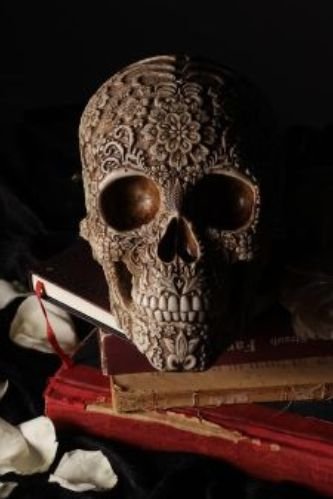In Sanskrit Kapala means “skull” and Bhati means “light, luster.” This is why kapalabhati is often referred to as Skull Shining Breath. It’s an important shatkarma, cleansing action, in the Hatha Yoga tradition.
Here’s a fun question to ponder: Why is kapalabhati called Skull Shining breath?
Because it clears the sinuses and brain tissues within the skull?
Because it causes the forehead to shine with perspiration?
Because it causes kundalini energy to rise upward toward the crown of the head where it shines with a lustrous glow (a halo)?
All of the above?
Believe it or not, I’ve heard all of those answers from teachers I trust. So take your pick, or better yet, check it out for yourself.
Here are two recordings which incorporate Skull Shining Breath, which I more commonly refer to as Breath of Fire. And, if you’re wondering, yes, we can even benefit from Breath of Fire during a gentle practice. (Breath of Fire in the gentle practice is done in a more subtle way.)
Kapalabhati: 38 min. Vinyasa Flow (suggested Spotify playlist is in the Vimeo description that you’ll see once you click the link.)
https://vimeo.com/641655523/00c4cdc7a1
Kapalabhati: 37 min. Gentle, Restorative, Yin (suggested Spotify playlist is in the Vimeo description that you’ll see once you click the link.)
https://vimeo.com/641660285/218ae4447a
*****
These recordings are offered for free. If you enjoy them and know someone else who would like them too, please forward this email :-)
If you’re able and would like to make a $1-$5 love offering/recording, many thanks!
Paypal = shala@YogaAndTheCosmos.com
Venmo = @Shala-Worsley
*****
Pratyaksha, Direct Experience
Regarding this 8000+ year old game of telephone we’re respectfully playing with yoga, we need to rely not only on the information passed to us from trusted teachers and their lineages but also on our own direct experience of the results of the practices (pratyaksha = knowledge gained from direct experience).
I’ve listed some contraindications for kapalabhati below. Always make sure you’re getting a whole body YES for any breathing practice, posture, or meditation. Otherwise, skip or modify to suit the needs of your particular body/mind that day.
How To, Benefits, & Contraindications
The practice of kapalabhati is a repetition of forced and quick exhalations created by a contraction of the diaphragm followed by passive inhalations.
According to BKS Iyengar in Light on Yoga, the process of Kapalabhati is a milder form of Bhastrika, Bellows Breath, which we will cover in a future segment. Iyengar states that Kapalabhati and Bhastrika invigorate the digestive organs and tone the abdominal muscles, drain the sinuses, cool the eyes, and give an overall sense of exhilaration.
Kapalabhati is one of six cleansing actions listed in the ancient Hatha Yoga texts, Gerhanda Samhita and Hatha Yoga Pradipika. They describe the effects of kapalabhati as purifying the energy channels (nadis) and pacifying the Kapha Dosha which brings about a feeling of lightness in the body and mind.
Here’s an article which references several scientific studies related to benefits of practicing kapalabhati such as: brain massage, strengthening of the respiratory organs, purification of blood and skin, improved hair growth, weight loss, and improvement of digestive system disorders: https://www.fitsri.com/pranayama/kapalbhati
Precaution should be taken by people with unchecked high blood pressure and those with glaucoma, lung conditions, or who are at risk of heart attack or stroke. For this population, it is advised to practice kapalabhati only under the direct guidance and supervision of an expert. Additionally, if any person becomes light headed or dizzy during the practice, it's a sign that the practice is contributing to an imbalance of Vata dosha. In this case, stop breath of fire and return to normal inhalations and exhalations.
Happy Skull Shining on this week of All Soul’s Day and Day of the Dead!
love,
Shala

